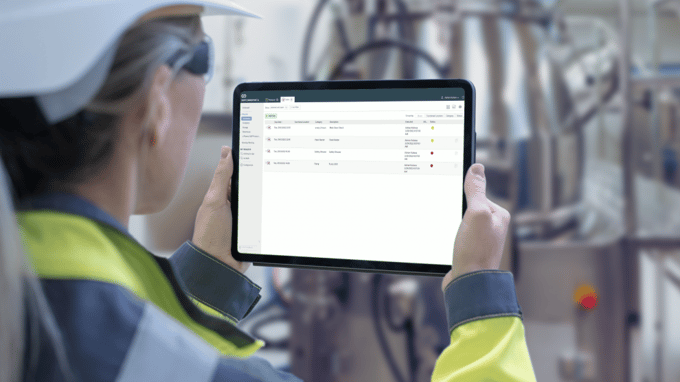In 2021, IPCOS had the chance to work on a global project for one of the leading chemical companies with around 100 sites spread over more than 60 countries. Often sites work independently, and sharing knowledge between teams does not happen naturally or is only done verbally. In some cases, important information goes missing between different shift transitions.
The client wanted to implement a tool that will facilitate the performance management of their sites and enables the sharing of information. A solution that serves the sites’ unique requirements but also harmonizes processes, unifies the OEE tracking, action tracking, and electronic recording of events. They wanted to scale up best practices, so they could have an overview of the production results of the sites’ performance and make informed decisions.
Technical solution
To improve the information flow, the client decided to go with Shiftconnector® from Eschbach. The software allows all shift operators to document events in real-time and present the information clearly when shift changes. The solution offers more than just a shift book; it also gives the ability to design forms that fit plant operations, to continually track and improve OEE and Asset Utilization via standardized dashboards that track the status of the defined KPI. The information is captured, stored and can be audited at a later stage.
Initiating the project
It was essential to have a project execution plan, which included procedures, prerequisites, and sites ready to test deployment models. IPCOS worked closely with the sites to help them get ready for the implementation phase. Our team checked availability for the roll-out and the data quality which would be fed into the software. Another essential point was to ensure that there would be no resistance from the operators since the tool would change the way of working. It was important to include them in the conception of the software and define their roles. Together with the on-site team, we were able to design a solution that responded to the requirements of the customer.
The requirements-gathering phase
During a typical observation phase, IPCOS team would go on location to study current practices at shift handover. What documentation was currently used? What were the KPIs they were taking into consideration? Then we would try to reproduce what the client’s sites already have with the improvements that the new platform allows us to make. Thanks to this information, we were able to move into the design phase, which was challenging for our team since all sites tend to have their own habits. The situation demanded we understand why the team would resist the changes and then show them how the tool would improve their daily lives. A kickoff was organized with the key users. The objective was to involve them in the conception of the solution. In addition, we focused on standardization, which was one of the most significant requirements to make our project successful.
The Implementation phase
A first draft was designed by our team, considering all the requirements and was then presented to the customer. The site ready to test the deployment models was instructed to run it in a test environment and then give the IPCOS team feedback. This testing stage was also a way to help the doubters among the operations team discover the advantages of the solution to their daily life. A brainstorming session was initiated to improve the solution further. Finally, a revised version was delivered and migrated to a production environment.
What’s next?
IPCOS brought to the project successful change management. It has been almost a year since the beginning of the project. Thanks to the expertise of our engineers and consultants, we have successfully rolled out the solution to a couple more live sites and have moved into a support phase where we involve the users in testing the platform functions and possibilities for visualization, recording, reporting, etc. The key users’ constant engagement brings new ideas for future developments.
Contact IPCOS for a detailed analysis of your digitalization strategy.





